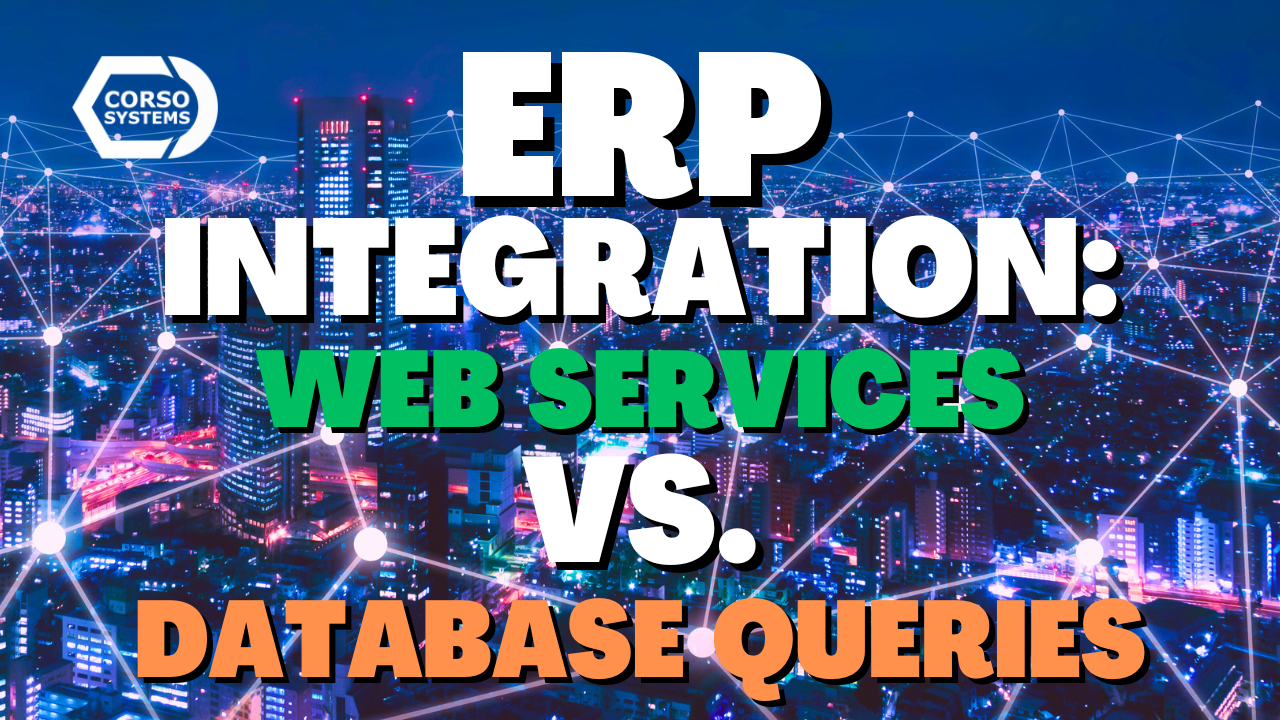Identity Providers in Ignition
Corso Systems demonstrates how Identity Providers (IdP) in Ignition let you manage users and their credentials and integrate two-factor authentication (2FA) with your SCADA system. We also show you how to access projects and your Ignition gateway with Single Sign On (SSO) using your existing credential system. Learn why you should switch from the built-in user sources to an Identity Provider.
ERP Integration: Web Services vs. Database Queries
When integrating with an ERP System, should you use web services, or choose to work with the database directly? Corso Systems explains why this important architecture depends on your project and situation.
Importing Geolocation Data Into Ignition
On Corso Systems' Ignition Community Live webinar titled “Ignition Around the World” we got some interesting questions, one specifically was how to import non-mobile device geolocation into Ignition. Examples of this would include KML files from Google Maps or other GIS applications, or GPX files from GPS devices like a Garmin.
Sparkplug B Integration With NodeRed
Corso Systems Show you how to use Ignition Maker Edition allows you to integrate with a ton of different hardware solutions. A lot of these tools are IoT Devices, and can easily integrate with NodeRed. If you have spent any time working with MQTT you have likely heard of Sparkplug B. If MQTT is like pressing an easy button with Industrial Communication Protocols, Sparkplug B is like hitting the easy button with MQTT.
Digital Work Order Instructions
Corso Systems tackles Lean Manufacturing with Digital Work Order Instructions. When integrated with a SCADA and MES system, this gives operators the information they need, when they need it. Digital Work Order Instructions can help provide training to new operators, and reduce errors by experienced operators.
Integrating Node-RED and Ignition
Node-RED is one of the easiest to use tools in IIoT. Build a graphical program, integrate with APIs, custom libraries, and web services. Then, run Node RED on a server, Raspberry Pi, or even an Opto22 Groov Epic PLC!
Pick to Light in Ignition
Corso Systems explains how automating a common manual process, order picking, with a Pick to Light system using ignition will make your orders more accurate, reduce training time, and overall make your crew’s jobs easier.
Reporting in Ignition’s Perspective Module
Corso Systems walks through how to display a standard Report for web browsers and mobile devices using the Perspective Module in an Ignition SCADA System. If you have previously integrated reports with the Vision Module, you will be able to easily integrate your reports with Perspective and the Report Viewer component.
MQTT Data from IoT Devices
Corso Systems explains how to use a Particle Boron board and MQTT to send IoT data to an Ignition Gateway.
State of the Edge 2020
Ignition Edge has come a long way since it was first introduced. There are now 5 different versions of Ignition Edge to give you the flexibility to use it in almost any situation. With exciting things coming down the pipe like OEE Edge from Sepasoft, it is a great time to look into Edge solutions if you haven’t already.
Following the order of the packages on the Inductive Automation site, let’s dive into each option, give an overview of what it does, tell you when and why you would want to use it, and help you decide if Ignition Edge is right for you.
On Deck Production Runs
Corso Systems shows how On Deck Production Runs are a useful approach to manufacturing. because. Staging an order before it is run on the line can allow for moving raw materials, swapping dies or inserts on a machine for new parts, cleaning cycles, or an allergen flush to increase productivity and reduce downtime.
How to Program Lead/Lag Pumping in Ignition
Corso Systems describes how to approach lead/lag/standby pumping schemes from a control perspective and how to quickly integrate them into Ignition for operator control. Lead/lag/standby schemes are standard in pumping applications, especially in water/wastewater. They allow a system to operate at low capacity, ramp up to meet increased demand, and spread the operational load across multiple pumps to reduce maintenance costs.












